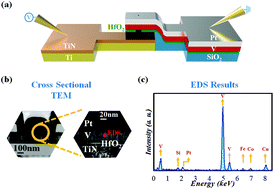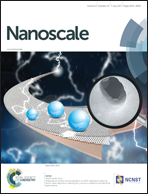Attaining resistive switching characteristics and selector properties by varying forming polarities in a single HfO2-based RRAM device with a vanadium electrode
Abstract
This study proposes a method for a HfO2-based device to exhibit both resistive switching (RS) characteristics as resistive random access memory (RRAM) and selector characteristics by introducing vanadium (V) as the top electrode. This simple V/HfO2/TiN structure can demonstrate these two different properties depending on forming polarities. The RS mechanism is activated by a positive forming bias. In contrast, the selector property is induced by a negative forming bias. The material analyses firstly confirm the existence of V in the top electrode. Then the electrical measurements for the same V/HfO2/TiN structures but with different forming polarities were carried out to further investigate their DC sweeping characteristics to act as either a selector or RRAM device. Furthermore, reliability tests for both selector and RRAM devices were also conducted to confirm their switching stabilities. Finally, current fitting methods and temperature influence experiments were performed to investigate the carrier transport mechanisms. Finally, physical models were proposed to illustrate the selector property and RS mechanism for selector and RRAM devices, respectively. This simple device structure with its easy operating method accomplishes a significant advancement of devices combining both selector properties and RRAM for remarkable real applications in the near future.



 Please wait while we load your content...
Please wait while we load your content...